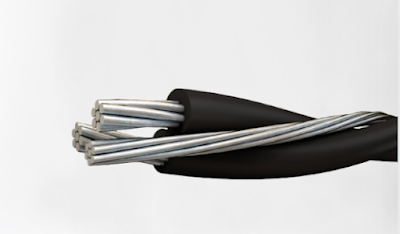Everything you need to know about type 241.1 cable
In particular, mining, construction, and industrial applications frequently employ reeling and trailing wires. These cables are appropriate for use on cable reels or in situations where the cable needs to be dragged or pulled since they are made to withstand repeated movement, bending, and mechanical forces.
Cable reels, which are frequently seen in machines like cranes, hoists, and winches, are intended expressly for use with reeling cables. These cables normally have a high degree of flexibility and are durable against mechanical harm, abrasion, and oil.
On the other hand, applications where the wire is pulled behind moving machinery or trailed along the ground call for the use of trailing cables. They frequently serve as a source of power and control in mining operations.
Why is type 241.1 cable widely used in mining activities?
This specification of reeling and trailing cables, which include main feeder cables for continuous miners, pump cables, and power supply cables, is made to offer a flexible electrical connection between portable or mobile equipment and a source of supply.
Applications of type 241.1 cable
Underground mining cables are created expressly to satisfy the stringent demands of mining operations. In underground mining operations, they are utilized to supply power, control signals, and communication. Below are a few typical uses for underground mining cables:
Power distribution
The mining site's electrical power is dispersed through underground lines. They link numerous pieces of machinery, such as pumps, conveyors, crushers, and ventilation systems, to power sources like substations or generators.
Longwall Mining
In underground mines, longwall mining is a method for removing coal or other minerals. The longwall shearer, a cutting device that takes material from the coal seam, is powered and controlled by mining cables.
Shuttle cars and scooters
Within the mine, materials, and debris are transported using shuttle cars and scoops. These vehicles receive electricity from mining lines, allowing them to function effectively and securely.
Drilling Rigs
Drilling rigs for exploration, production, and other drilling operations are powered by underground mining cables. To run drilling machines and equipment, they supply the electrical power and control signals required.
Ventilation Systems
To ensure air circulation and maintain a safe working environment, underground mines need to have adequate ventilation systems. The ventilation fans and control systems that manage airflow and expel dangerous gasses are powered by mining cables.
Pumping systems
To avoid floods and maintain a safe working environment, dewatering is frequently needed in underground mines.
Submersible pumps are used to remove water from mine shafts and tunnels with the help of mining cables.
Conclusion
It's significant to note that underground mining cables are built with certain qualities to survive challenging circumstances including dampness, extreme heat, mechanical stress, and chemical exposure.
To ensure dependable performance and safety in demanding mining conditions, they often have strong insulation, shielding, and protective layers.
Make sure, if you are particularly focusing on the quality and performance of type 241.1 mining cable, then there will be no better option than Znergy Cable. We at Znergy Cables are the best electrical cable manufacturer of type 241.1 cables in Australia.




Comments
Post a Comment